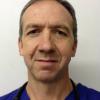We all want to avoid varicose veins. These unsightly, knobbly veins are often dark purple or blue in colour and can appear to bulge. Sometimes, they don’t cause symptoms, but sufferers may experience an achy or heavy feeling, burning throbbing or itching. From a cosmetic perspective, it’s easy to understand why we would prefer not to have our limbs displaying bluey veins. However, varicose veins can be a sign that something needs to change in our lifestyles. Indeed, untreated varicose veins can cause other problems.
Ideally, if you develop varicose veins, you should be be seen by a specialist doctor as there are cutting-edge new treatments available. But there are some self-help strategies to reduce the risk of developing them in the first place.
So, what can we do to keep our legs healthy?
1. Don’t sit (or stand) for too long
Being in one position means it’s harder for your blood to circulate, causing your veins to rise. This can cause swelling around the ankles and discomfort. Ideally, you should remember to get up out of the same position every hour. So, if you find yourself stuck, such as sitting at a desk or in a plane seat, keep stretching out your legs and ankles and peddle your feet. You could also try bending your knees and marching on the spot.
2. Put your feet up
Find three opportunities a day when you can elevate your feet above the heart for 15-minutes a time. This will help your blood circulate better and reduce the pressure in the leg veins. Gravity will help the blood flow back better to the heart.
3. Don’t forget to exercise
We know exercise is good for us – and vein health is no exception. You don’t have to be an Olympian – even daily walks can help protect against varicose veins. Pilates and yoga are also good options, especially positions where your legs are elevated above your heart. Cycling or swimming are a good idea. However, there is some discussion as to whether intense cycling (as performed by professionals), may exacerbate varicose veins. Cycling for leisure shouldn’t cause issues.
4, Eat right
Too much salt in your diet can put you at a heightened risk of varicose veins. Leave the salt shaker to one side, and instead opt for potassium-rich fare which avoids high-blood pressure; this includes foods such as leafy vegetables, almonds and lentils. For treats, try flavonoid-rich citrus fruits, grapes and berries and dark chocolate. Flavenoids (nutritional compounds) boost blood circulation, and can improve vein and blood vessel health, all of which can reduce varicose veins. Keeping a healthy weight is also a really important step to keep the pressure off your leg veins.
5. Try gentle massage
Keep the blood flowing by rubbing lotion or oil in your legs may help avoid varicose veins. Massage may help reduce swelling or discomfort, but unfortunately, it will not make varicose veins go away, it’s also important to remember not to press directly onto the veins, as this may damage the tissue.
6. Keep it comfy
It might be an idea to leave the super-tight, skinny jeans and shape underwear a miss. Tight-fitting clothes can restrict blood flow. Keep to loose-fitting clothes, so the blood supply can keep flowing. High heels may put too much pressure on the legs, causing varicose veins, so avoid the vertiginous stilettoes and choose supportive shoes with a lower heel (but not completely flat).
7. Try the right hosiery
Support stockings apply direct pressure to the legs – so although tight clothes in general aren’t great for varicose veins, when compression is targeted like this, it will help the blood moving. This has got evidence behind it – research has found that people who used knee-high compression stockings with a pressure of 18 to 21 mmHg for one week, reported a reduction in the pain and aching associated with varicose veins.
8. If you develop varicose veins ... don't ignore them!
According to Professor Stephen Black, who treats patients at UK Vein Clinic we should not ignore varicose veins. He says: ‘Varicose veins are often considered to be simply a cosmetic issue, however, it is very important to understand that they are a sign of vein disease and that this could progress to complications such as ulceration, blood clots (thrombosis) and in the worst case scenario a blockage in the lungs (pulmonary embolism), which can be fatal.’ Although lifestyle changes can help with your general health and may prevent future varicose veins developing, ultimately, the evidence for the ability of diet and exercise’s ability to reverse existing varicose veins is very weak. The latest clinical evidence clearly shows that non-invasive surgeries using radiofrequency technology deliver by far the best outcomes for the majority of patients. They are precise and effective, offering lasting relief from symptoms while minimising possible downsides of treatment (like post-op pain and scarring). Find out more here.
Read more ...
- Why is it important to treat varicose veins
- Diagnosing and treating varicose veins
- Varicose veins should be treated more seriously








